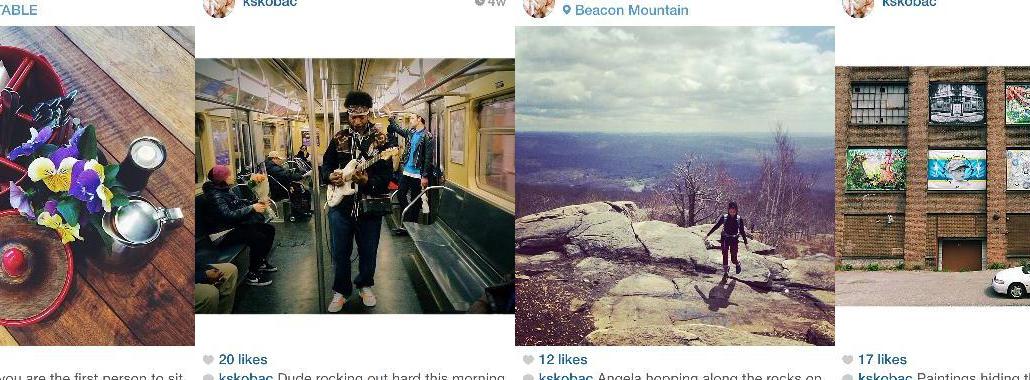
Instagram dropped the bomb yesterday that an algorithm would rule the photo stream just like it runs the News Feed on Facebook. That means brands will have to rethink their strategies to win the love of their followers on the platform, which has some 400 million users.
“The goal is to help people see more of the moments they care about first, including posts from businesses. We believe making this change will increase time spent and posts viewed on Instagram, which benefits everyone who utilizes the platform,” Instagram wrote to agencies in an e-mail obtained by Digiday.
Still, by its very nature, an algorithm means there will be winners and losers on the photo app. Here’s who stands to benefit — and who stands to feel some hurt.
Winners
Instagram’s ad business
Without a paid marketing strategy, there is no way to guarantee exposure for a given post. Instagram told agencies that, at first, all posts will be be shown to all followers, just out of order and optimized for relevancy. Still, that could change at any time, and a paid strategy is the only guaranteed way to boost performance.
“If you pay to create good, quality content, then pay to promote it. And don’t waste time creating shitty content,” said Chris Tuff, director of business development at 22squared.
Your sister’s baby photos
Here are three criteria Instagram said would weigh heavily on the algorithm: “The personalized feed will take many signals into account, such as the relationship between poster and user, timeliness of posts, and how likely it is that the content will be interesting to the user,” the e-mail to agencies said.
That means moms and best friends will still be a priority, and even could get a boost by rising to the top of the photo stream even if they posted hours prior.
Sexy brands
There are certain verticals that already perform very well on Instagram — fashion, beauty, food, health and fitness and pets, are among them.
“If your brand can successfully play in these spaces, you’ll continue to win with this algorithm update because it will favor more of what users already like,” said Jill Sherman, svp of social strategy at DigitasLBi. So think food and pets if you want to rise to the top of the feed.
Trendy publishers
When Facebook went to an algorithm-based News Feed, premium publishers’ content was given preferential treatment. Publishers and media companies already performing well on Instagram — entertainment, fashion and sports industries — could get a lift too, especially with posts that are related to trending topics and video clips that attract lots of views.
Losers
Twitter
It’s easy to empathize with Twitter; whenever it makes a move, Instagram or Facebook are always there with a countermove. In this case, Twitter launched its attempt at an algorithm last month, and Instagram, already with more users, readies an algorithm born from Facebook’s expertise. “As we’ve seen on Facebook, algorithms can also be updated to give the platform a competitive advantage, like favoring live video or trending topics,” Sherman said. “Clearly, Twitter was a direct target.”
Boring brands
Not every brand is Nike. Instagram is awash in ho-hum marketers pumping out dreck that lands with a thud. An algorithm is going to sniff out these poseurs and bury their come-ons — unless they pay up, of course.
“Brands with lower budgets and fewer engagements on their content will be squeezed out over time,” said Noah Mallin, head of social at MEC North America.
The only-losers-pay-for-it crowd
Instagram says brands can get their content through just fine if they prove they can perform, but it’s clearly following the Facebook path where the marriage of organic and paid content is a requirement. Advertisers should be prepared for the worst on this, which means that not only is a paid strategy just smart, it might be necessary in the future.
“Brand content is some of the most popular on the platform, but it could very well go the route of Facebook organic reach,” said Jason Stein, CEO of Laundry Service. “That said, if you want to advertise at scale on Instagram now, you need to use paid media so it’s not a huge change in terms of total reach.”
The quantity-over-quality approach
The publishers and brands that over-post, and spam the platform, will get downgraded right out of the photo stream. Algorithms tend to force publishers to post less and ensure what gets posted is of higher quality.
“It probably just got more important to ensure the quality of anything you post,” Tuff of 22squared said. “Only the best will succeed.”
More in Media

Walmart rolls out a self-serve, supplier-driven insights connectors
The retail giant paired its insights unit Luminate with Walmart Connect to help suppliers optimize for customer consumption, just in time for the holidays, explained the company’s CRO Seth Dallaire.

Research Briefing: BuzzFeed pivots business to AI media and tech as publishers increase use of AI
In this week’s Digiday+ Research Briefing, we examine BuzzFeed’s plans to pivot the business to an AI-driven tech and media company, how marketers’ use of X and ad spending has dropped dramatically, and how agency executives are fed up with Meta’s ad platform bugs and overcharges, as seen in recent data from Digiday+ Research.

Media Briefing: Q1 is done and publishers’ ad revenue is doing ‘fine’
Despite the hope that 2024 would be a turning point for publishers’ advertising businesses, the first quarter of the year proved to be a mixed bag, according to three publishers.





